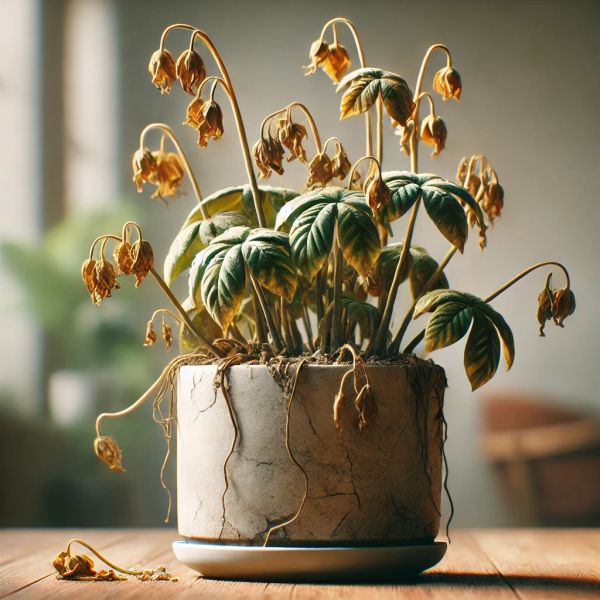Environmental Stress and Plant Shock: Causes & Solutions
Is your plant suddenly wilting, dropping leaves, or looking unhealthy? Environmental stress or transplant shock could be the cause. Learn how to help your plant recover.
Plants are sensitive to changes in their environment. Sudden shifts in temperature, light, or humidity—or even repotting—can cause stress, leading to leaf drop, wilting, or slowed growth.

Disclosure: This content includes affiliate links, which means we may earn a commission if you click on a link and make a purchase. As an Amazon Associate, we earn from qualifying purchases. This comes at no extra cost to you and helps offset the cost of running Leafwise. Please read our disclaimer for more info.
Common Causes of Environmental Stress
1. Temperature Fluctuations
Plants can struggle when exposed to extreme heat, cold, or rapid temperature swings.
- Symptoms: Wilting, leaf curling, browning edges, or sudden leaf drop.
- How to Diagnose: If your plant was recently moved near a drafty window, air vent, or heater, temperature stress is likely.
-
How to Fix It:
- Keep plants away from heaters, air conditioners, or drafty windows. Consider using a temperature monitor to ensure a stable environment.
- Maintain a stable room temperature between 65-75°F (18-24°C) for most houseplants.
2. Light Stress (Too Much or Too Little Light)
Plants need the right balance of light. Sudden exposure to strong light or moving them into low light can cause stress.
- Symptoms: Scorched or faded leaves (too much light); yellowing, slow growth, or leaf drop (too little light).
- How to Diagnose: If leaves look burned or pale after moving a plant, it's likely light stress.
-
How to Fix It:
- Move sun-sensitive plants to indirect light to avoid scorching.
- Use grow lights to supplement natural light for low-light plants.
3. Humidity Changes
Low humidity can cause leaf browning, while excessive humidity can lead to mold or rot.
- Symptoms: Crispy leaf edges (low humidity), mold growth or limp leaves (high humidity).
- How to Diagnose: If your plant's leaves are browning and the air is dry, it may need higher humidity.
-
How to Fix It:
- Use a humidifier or a pebble tray to increase humidity.
- Improve airflow if humidity is too high to prevent fungal issues.
4. Transplant Shock
Repotting or moving a plant to a new environment can cause temporary stress as it adjusts.
- Symptoms: Wilting, yellowing, or dropping leaves after repotting or relocation.
- How to Diagnose: If symptoms appear shortly after repotting, transplant shock is likely.
-
How to Fix It:
- Water the plant lightly after repotting but avoid overwatering.
- Keep it in a stable environment with consistent light and temperature.
5. Shock from Sudden Environmental Changes
Drastic changes in care routine, such as sudden watering adjustments or moving a plant outdoors, can cause stress.
- Symptoms: Drooping, slowed growth, or shedding leaves.
- How to Diagnose: If a plant declines after a sudden change in routine, environmental shock is likely.
-
How to Fix It:
- Make gradual changes to a plant's environment rather than sudden shifts.
- Acclimate plants slowly to new conditions (e.g., move them outdoors for a few hours per day before full relocation).
Preventing Environmental Stress
- Keep Conditions Stable: Maintain consistent temperature, light, and humidity levels.
- Introduce Changes Gradually: Acclimate plants when moving them to a new location.
- Monitor for Stress Signs: Catching symptoms early can help prevent serious damage.
Need More Help?
If your plant is still struggling with environmental stress, try the Leafwise Plant Health Diagnosis Tool for a personalized assessment.
